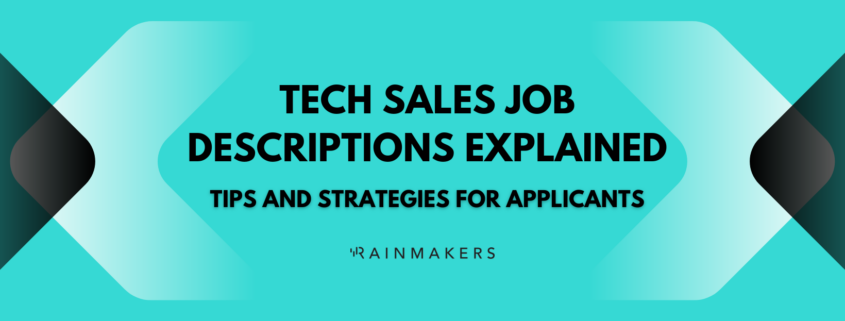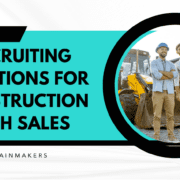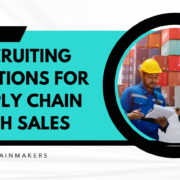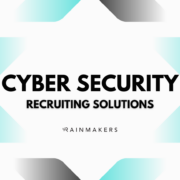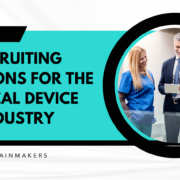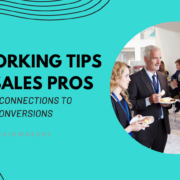Tech Sales Job Descriptions Explained
Making Sense of Tech Sales Job Descriptions
In this article, you’ll learn what tech sales job descriptions tell you, along with a breakdown of the types of sales positions in tech.
Before we discuss how companies advertise sales positions (and what that means for you, the job seeker), it’s helpful to have a basic understanding of the possible types of tech sales jobs.
In a certain sense, it’s pretty simple. However, excluding managerial roles, there are two types of tech sales jobs: those related to sales development (it’s possible to get sales development jobs with minimal experience) and those related to actual sales, closing deals, etc (typically known as an Account Executive).
But within these two categories, there is an astonishing amount of variety.
Different companies have different needs, so being an SDR/AE at one company is likely quite different from having the same job title at another.
Let’s first consider SDR’s and the types of roles.
Types Of SDR Jobs
1. Outbound SDR:
This is a labor-intensive role, often best suited for people fresh out of college and beginning a career in tech sales. It involves a lot of cold calling (80 – 100/day), mass emailing, and leaving voicemails—the epitome of grunt work. Companies that lack many marketing leads will often compensate by using teams of outbound SDRs to generate opportunities manually.
2. Inbound SDR:
This is a much ‘chiller’ job compared to an outbound role, available at companies with significant interest in their product. The Inbound SDR will qualify various inquiries and decide which ones are worth passing along to the sales team. These are great jobs to look for because any company with enough interest in their product to need Inbound SDRs likely has a substantial product market fit.
3. Enterprise/Strategic SDR:
In this role, an SDR works closely within a team or directly with an Account Executive to open up essential business opportunities. It will still involve cold calling but require more strategy than a traditional Outbound role. Often, Enterprise SDRs will have to map out the various people in an account and create personalized emails based on their LinkedIn profiles.
Of course, most SDR roles will not exclusively be one of these three types but will be more of a hybrid of several. Now, look at some SDR job descriptions and see what one can gather from them.

SDR Job Descriptions: Decoded
Example 1: Diffbot
Account Development Representative (ADR)
The Account Development Representative (ADR) at Diffbot is the first line of customer identification and qualification for the Data Solutions team. This role helps qualify Inbound and prospect outbound leads for the company’s sales process — ADRs are innately curious about how AI will revolutionize the nature of information processing across all industries in the future. In addition, they are comfortable speaking the language of all the various stakeholders in a large organization, ranging from the developer to the CEO, to learn how they use data and educate them about how our technology can make their workflows more efficient.
Core Responsibilities:
- Lead prospecting targeted outbound accounts for new opportunities; respond to and qualify inbound leads for potential customers.
- Meet and exceed set monthly opportunity generation goals
- Communicate professionally and build relationships with C-level and VP-level contacts at companies across various industries
What Does This Actually Mean?
From this description, we know that the ‘Account Development Representative’ role at Diffbot is a hybrid of an Inbound SDR and Enterprise SDR. We know that there is an inbound competent person for the job because it says so plainly. However, we know there is an Enterprise SDR component to the role because of the bit about being ‘comfortable speaking the language of all the various stakeholders in a large organization.
What this translates to, roughly, is that the ADR will have to interface with several people within an organization. This could be to book a meeting for an account executive, but it could also be doing some detective work and finding out who the decision maker/makers are. The ‘Account’ Development Representative has to think about entire accounts strategically rather than just throwing out blind, repetitive cold calls.

Example 2: Apptimize
Sales development is the life blood of Apptimize. The CEO loves sales development and in the early days manually sent 500 emails per day. The sense of accomplishment when you go through the prospect responses, the rapid iteration through different combinations of target profiles and pitches- maybe we’re weird but we find it satisfying and fun. Business development is how we get our best customers.
This role is ideal for someone who wants to live at the the front line of our go to market strategy and figure out what works with what audience and what’s going to come up during the sales process.
What Does This Actually Mean?
While it doesn’t say so specifically, from the second sentence, it’s pretty clear that this is a job description for an Outbound Sales development role. Here’s how you can tell. First and foremost, Apptimize gloats about and admires the manual outbound sales process the CEO went through in its early days. Secondly, the description specifies that this role is for someone who wants to be on the ‘front line.’
Note: If you read this article and retain anything, remember that in sales, being on the ‘front line’ is code for an extensive amount of cold calling, cold emailing — and manual sales work. From this job description, it seems likely that Apptimize’s SDR role is almost purely outbound.
Example 3: Airtable
Core Responsibilities:
- Strategize around sales inquiries with other members of the sales team.
- Educate existing free Airtable users about the value of our premium product.
- Coordinate users’ product exploration journeys tailored to the specific organization to convert budding interest into commercial action.
- Learn to model rapidly a wide range of use cases across different industries and the key dynamics that affect them.
- Actively deploy these modeling capabilities in highly targeted customer situations.
- Conduct high-leverage, in-depth research to find new sales leads and enable success with the newly identified leads.
- As an early team member, be energized by the opportunity to help build a process from the ground up.
- Use data to problem-solve around the sales process and generate force-multiplying changes.
What Does This Actually Mean?
This role is an Inbound SDR role. Their Sales Development Associates are expected to work only with current customers using the Airtable product and warm leads who have inquired about the product. There is some strategic work in attempting to find new business opportunities. Still, because there’s no reference to working with VPs or CEOs, the work is likely much less about strategizing careful outreach and more about generating interest with inbound leads to pass along to the sales team. You’ll need an intermediate level of sales skills and experience to perform well in this role.

Types of Account Executive (AE) Jobs
As an Account Executive selling SaaS, there are three basic categories under which your job can fall. Here’s what we’ve come up with:
1. Transactional Selling:
In this role, an Account Executive will meet with many clients briefly (often only one phone call). Not an incredible amount of strategy is involved with this sort of sale, and successful AE focuses on securing ‘one call closes’ through persuasion and hustling to get more leads.
2. Enterprise (Complex) Sales:
In this role, an Account Executive will have to go through several meetings with various stakeholders and strategically align various interests of multiple parties to close large six to seven-figure deals. It’s the classic definition of a complex sale.
3. Everything In-Between:
Mid-market sales, which lean towards medium-sized businesses or small departments within large corporations, are the most common type of software selling. AEs usually have 2-5 meetings with 1-3 parties to close these deals, which require more patience than transactional selling but move faster than large enterprise deals.
4. Full Cycle Sales:
Full cycle AE’s lack the support of SDRs to book meetings and generate opportunities. This means they must foster their client relationships from start to finish and focus a decent amount of time not on selling but on developing opportunities. On the other hand, pure sales AEs spend all day closing marketing and sales qualified leads without working on business development. You won’t become a Rainmaker in this type of role in one day. Big deals take time to close, but they’re worth it!

Account Executive (AE) Job Descriptions: Decoded
Example 4: Freshdesk
In this hunter, quota-carrying sales role, we seek passionate and highly driven professionals with prior software / SaaS sales experience. The Account Executive will accelerate Freshdesk’s revenue growth in the U.S.
Specifically, the Account Executive will:
- Generate pipeline for Freshdesk’s Mid-Market business
- Prospect, manage the sales process, and close new accounts in rapid cycles, primarily inside the sales environment
- Work closely with Freshdesk teams to quickly learn and communicate Freshdesk’s value proposition clearly and effectively
- Sell multiple product lines
- Be part of the core U.S. team to represent Freshdesk at industry events.
What Does This Actually Mean?
Though the job title says ‘Enterprise Account Executive, ’ the job description tells us something much different. First and foremost, ‘mid-market’ businesses are specified in the description rather than Fortune 500 companies. Also, the sentence ‘close new accounts in rapid cycles’ indicates that the selling is likely transactional in nature. Finally, there are several indications that the Account Executive is responsible for generating his or her own pipeline. Thus, despite the job title, the job description indicates a full cycle, transactional Account Executive position.
Are you looking for a new IT sales job? Start your new career today. Apply now and connect with employers!

